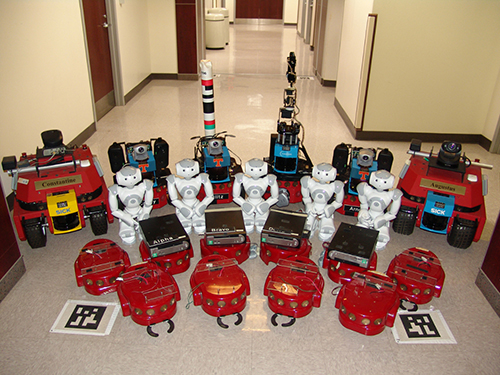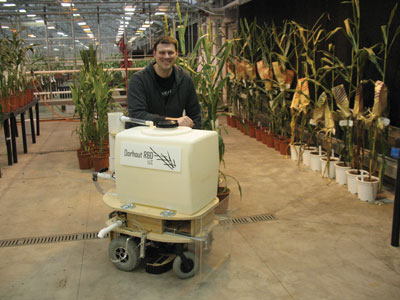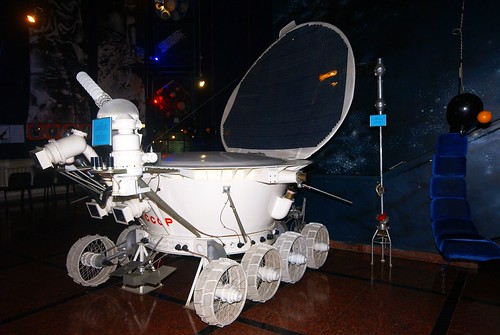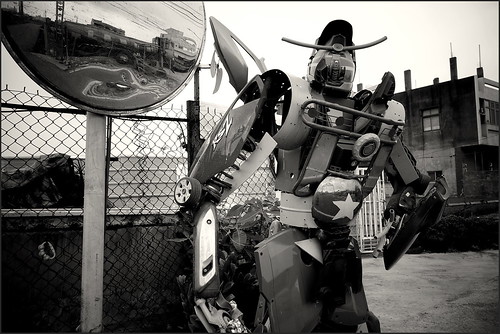
While other companies are working to develop fully autonomous vehicles, Ford has been working on a slightly different problem. According to a news release, they want robots to drive their traditional human-piloted vehicles on the test track. Robot test drivers could stay on the road 24 hours a day, 7 days a week. Ford is launching a pilot program with a robot test driver for their 2014 full-size commercial Transit van. A single human can monitor up to eight simultaneous robot test drives. From the Ford news release:
“Some of the tests we do on our commercial trucks for North America are so strenuous that we limit the exposure time for human drivers,” says Dave Payne, manager, vehicle development operations. “The challenge is completing testing to meet vehicle development time lines while keeping our drivers comfortable. Robotic testing allows us to do both. We accelerate durability testing while simultaneously increasing the productivity of our other programs by redeploying drivers to those areas, such as noise level and vehicle dynamics testing.”
The robotic technology used to drive the Ford vehicles comes from Autonomous Solutions, Inc.. The Ford test track is designed to compress 10 years of driving abuse into a small course. The robots must repeatedly drive trucks over broken concrete, cobblestones, metal grates, gravel, mud pits, curbs, and speed bumps. the course is so rough that human drivers were limited to one drive per day. Read on to see video and more photos of the robot test drives.
Read More

































